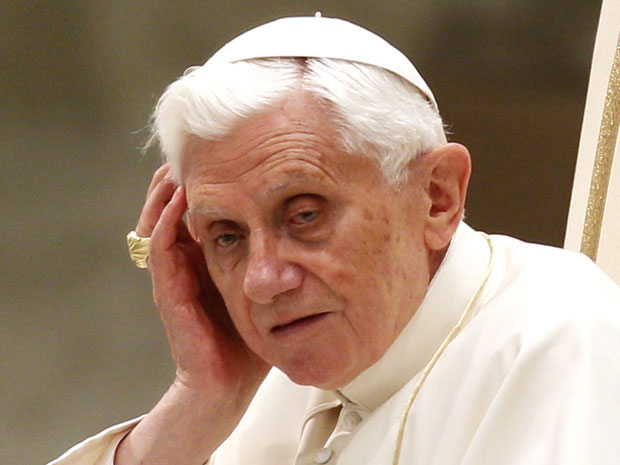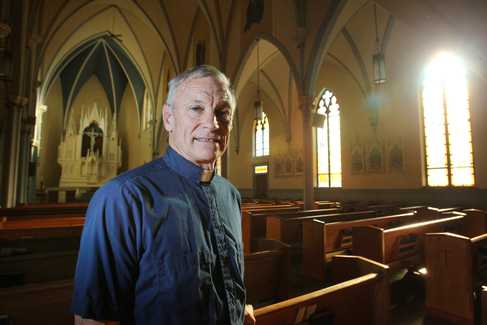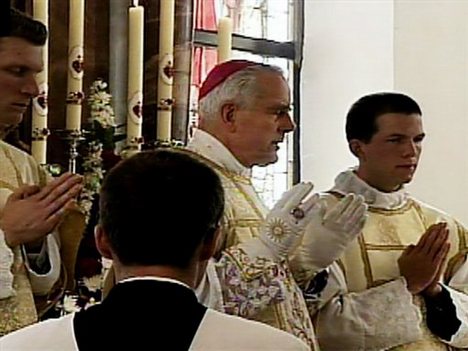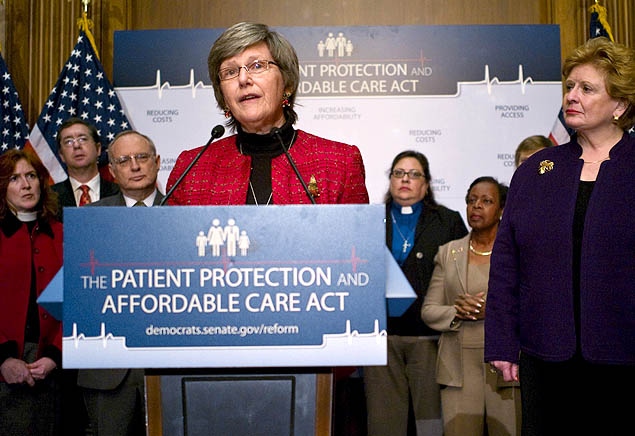Commentators offer a range of explanations for last week’s Vatican “assessment” charging a group that includes the largest number of US Catholic sisters, the Leadership Conference of Women Religious (LCWR) with “serious doctrinal problems” and “radical feminism.”
 One frequent explanation is that the report was issued in retaliation for support given the 2009 Affordable Care Act (ACA) by Network, a Catholic social justice lobby with close ties to the LCWR. For example, in a BBC News interview several days after the release of the assessment, Sister Simone Campbell, Network’s executive director, acknowledged “a strong connection” between Network’s challenge to the US bishops over the ACA and the Vatican accusations.
One frequent explanation is that the report was issued in retaliation for support given the 2009 Affordable Care Act (ACA) by Network, a Catholic social justice lobby with close ties to the LCWR. For example, in a BBC News interview several days after the release of the assessment, Sister Simone Campbell, Network’s executive director, acknowledged “a strong connection” between Network’s challenge to the US bishops over the ACA and the Vatican accusations.
No doubt there is some truth to this analysis. But it’s worth noting that the Vatican launched the investigation that culminated in this document in January 2009, more than a year before Congress passed the ACA. Given the speed with which Rome does things, it’s more than likely that while the sisters’ support for the ACA contributed to the harshness of the statement, it by no means caused it. Indeed, Pope John Paul II mandated a previous investigation of US religious in 1983, though the outcome of that process was less brutal than the current one has proven to be.
In point of fact, throughout the history of the Church, bishops and popes have struggled mightily to keep committed celibate Catholic women under control. Already in the early Christian centuries male church leaders forced virgins to describe themselves as “brides of Christ” rather than use the male martial imagery they had come to use during the Roman persecutions. The early equality between male and female desert monastics was likewise undercut when eighth century bishops began taking control of women’s monasteries and ordained monks to the priesthood for the first time (but not nuns, of course.) And as, throughout the following centuries, groups of dedicated Christian women came together—canonesses, Beguines, beatas, recluses—popes, bishops, and male theologians went to great lengths to rein them in.
In the 12th century, Aelred of Rievaulx forbade women recluses to so much as talk alone with their confessors; Gregory IX imposed cloister on all Franciscan sisters except those in the house led by their foundress, Clare of Assisi; and in 1917, after a century marked by the foundation of innumerable active (that is, non-cloistered) congregations of sisters dedicated to serving the needs of the sick and the poor, the new Vatican Code of Canon Law cloistered them all, imposing rigid rules that undercut their ministries.
As the century moved on, however, relations between the Vatican and the sisters seemed to improve. In its effort to respond to the horrors of the twentieth century, the Vatican ordered the sisters to become better educated, to update their rules and habits, and to begin meeting together for the sake of greater effectiveness.
Already in 1929 Pope Pius XI had stressed the need for better prepared Catholic school teachers; in 1950, Pius XII called a meeting of the heads of all religious orders for the purpose of further advancing their collaboration; and in 1952 he called a meeting of women’s superiors, during which he urged the sisters to update and educate themselves for the purpose of attaining attain equal footing with their secular counterparts.
The Vatican also called for the formation of the US Conference of Major Superiors of Women, the group that eventually morphed into the currently-maligned LCWR. Ironically, the American women’s congregations at the time felt no need for the Conference, but organized it out of obedience to the Pope. Finally, the Second Vatican Council called the sisters to renew their congregations, return to the charism of their founders, and revise their constitutions, a call Pope Paul VI seconded. The sisters embraced Vatican II renewal immediately, with all their hearts, more so than any other group in the church.
So how, you may wonder, did the sisters and the Vatican get into the current conundrum? In much the same way that the rest of the Catholic Church did in the decades after Vatican II.
Conservative commentators argue that the sisters misinterpreted the teachings of Vatican II, or didn’t study them at all, and abandoned the way of life to which they were vowed. More illuminating, I believe is a comment made in 2005 by Sister Mary Daniel Turner, an LCWR executive director who, in the 1970s, led the organization through some of its most significant transformations: “Each time the church takes a step forward,” she said, “it takes a step back.” At Vatican II, the church called its members to respond to the “signs of the times,” to recognize “the universal call to holiness” that made clergy, religious and laypeople equal, to respond to the “joys and hopes, the griefs and anxieties” of modern men and women.
But when the “People of God” began to do this, the Vatican and the bishops realized with a shock what it actually meant, and they didn’t like it.
In point of fact, according to papers released in 2011 by the moral theologian Germaine Grisez, papal buyers’ remorse had become evident even before the closing of the Council, when Pope Paul VI made clear that he would not reverse the church’s earlier condemnation of artificial contraceptives under any circumstances. And in 1968 he was true to that promise, absolutely forbidding, in his encyclical Humanae Vitae, the use of artificial contraceptives. In so doing the pope overrode the recommendations of the birth control commission formed during Vatican II, a commission that included married lay people. So much for the equality that came with the “universal call to holiness.”
US sisters themselves began slamming into the buyers’ remorse of the institutional church around the same time. Already in 1967, the rollback of the renewal the sisters had undertaken with such commitment began to come into focus. When the cardinal archbishop of Los Angeles forbade the Immaculate Heart Sisters there from implementing the changes agreed upon at their renewal chapter, including modernizing their habit and educating their young sisters before sending them out to teach, the Vatican backed the cardinal, although these were changes the Vatican itself had called for. Ultimately, a majority of IHMs abandoned their status as Catholic sisters under canon law.
When LCWR members proposed a motion protesting the treatment accorded the IHMs, the Vatican representative at their meeting prevented the motion from coming to a vote. In the years that followed, the LCWR protested to Rome repeatedly what appeared to them unjustifiable intrusions by the Vatican and the bishops in decisions over which the Council had given them discretion.
I could go on but you get the idea. The recent investigation of the LCWR and accusations of doctrinal infidelity and radical feminism against the group are one more sad chapter in the long history of popes and bishops attempting to bring Catholic sisters to heel.
There is one significant difference, however. In part because of the Vatican’s own demand that they become so, the sisters currently under attack are the most highly educated women in the history of the church.
And because of the sisters’ hard, able, for the most part financially uncompensated work, Catholic women in the US today are also vastly more educated, competent, and professional than Catholic women of any previous generations. Think here, if you will, of Nancy Pelosi, recent occupant of the highest position of power a woman has held in the history of the US government. Think of Kathleen Sebelius. Think, for that matter, of me. We Catholic women understand the enormous debt we owe our sisters, and we are not pleased to have their faith denigrated in such a vile fashion even as they move into old age.
To paraphrase Sister Simone Campbell, I don’t think the boys have any idea what they’re in for.
Complete Article HERE!




